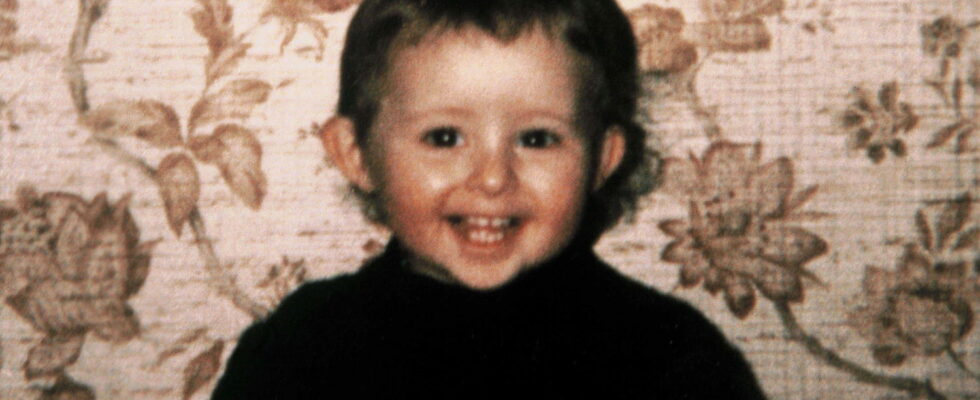The Grégory affair, named after the 4-year-old boy found dead in the Vosges in 1984, has still not been resolved. The investigation continues, progresses, and the prosecutor clarifies the preferred lead forty years after the events.
It has been 40 years, to the day, since the body of Grégory Villemin was found lifeless in the Vologne, a river in the Vosges, on October 16, 1984. 40 years also since the perpetrator(s) of the crime were not identified and that the victim’s parents are awaiting the legal outcome of this case. But even 40 years after the events, the investigation continues, assures Philippe Astruc, the new prosecutor general at the Court of Appeal of Dijon, in Côte-d’Or. The magistrate appointed in September 2024 has taken over the Grégory case file and made it one of his priorities.
“We must work with self-sacrifice and do everything we can and what we must do to work for the manifestation of the truth” declared the Attorney General on RTLthis Wednesday, October 16. While the file contains more than 17,700 procedural documents, the investigations continue in particular with the requests for documents regularly filed by the parents of Grégory Villemin. Recently, it is the use of the technique of parental DNA or that of voice recognition to identify the crow – the author(s) of threatening letters, one of the last of which claims the murder of the child – which were requested. If there is no longer “a group of investigators working full time” on the case, investigations are carried out on a case-by-case basis on certain points at the request of the magistrate.
The final objective is to find the perpetrator(s) of Grégory’s murder. Several people have already been imprisoned or indicted in this case, notably members of the child’s family: Bernard Laroche who is the cousin of Grégory’s father, Murielle Bolle, Bernard Laroche’s sister-in-law, or even the Jacob couple who are the child’s great-uncle and great-aunt. The trail of a family conspiracy, raised at the start of the investigation due to obvious jealousy towards the social success of the Villemin couple, would to date be “the dominant hypothesis” explained Philippe Astruc. It has been “for quite a long time now. It is the one which seems to result quite logically from all the elements” continues the magistrate who however refuses to “give specific names”.
“There is no single author”
If he gives credence to the family trail, the general prosecutor of the Dijon Court of Appeal also confirms the hypothesis of a crime committed by several people: “We are all more or less aware that there is no not a single author. There are, I remind you, approximately 1,000 calls which preceded the facts, several letters from the raven. The materiality of the facts, on the day of the events, suggests that there is a plurality of people. ‘authors.’
The trail of a murder involving several perpetrators is suggested by several elements according to the prosecutor, who notably mentions 9 DNA still unidentified among the file documents. However, these elements were confronted with 410 people, 244 of whom are considered “close to the investigation”, the magistrate said, in vain. The identification of DNA could allow progress in the investigation, however this will not necessarily mean that the perpetrator of the crime will have been identified. It will then be necessary to study “the person’s schedule”, a possible motive and determine “what they were doing at the time of the facts”, explains the magistrate. In addition to DNA traces, numerous hearings have also been and continue to be conducted regularly. And the attorney general remains hopeful that one day someone will provide an answer: “Someone knows [ce qu’il s’est passé] and didn’t say it, it seems obvious to me.”
A point of view shared by the lawyer for Grégory Villemin’s parents, Me Thierry Moser, who believes that several decades after the child’s death, people with information could, one day, bring it to the attention of the courts , as he said on France Blue this October 16. “Today, we know, we think we know, we think we know and we certainly know who did what, how, why, in this matter. We have convictions, but we must demonstrate them,” he said in February 2024 on BFMTV.
These different hypotheses and the continuation of the investigations leave the door open to a possible resolution of the case, but nothing is guaranteed, warns Philippe Astruc. “We are progressing, I would say, at the same time as science. So it is one of the elements that can allow us to progress. I am not necessarily saying to ‘solve’ things” he declared on RTL. But even without the assurance of having the final word on Grégory’s death, the magistrate maintains that “we must continue to work as long as we can, because we owe it to this little boy, we owe it to his parents who are victims.”
